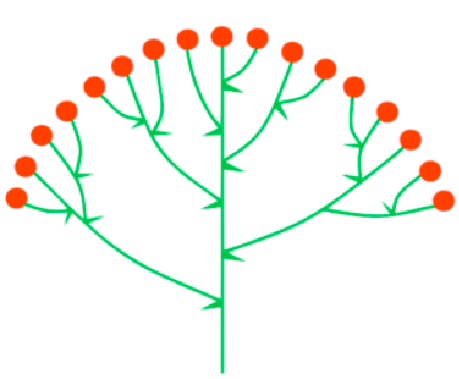Define cymose inflorescence and its types ?
In a cymose inflorescence, the main axis has limited growth and the flowers are arranged in a basipetal manner which means that the older flowers are found towards the top and the younger ones towards the base of the axis.
The different types of cymose inflorescence are :
Monochasial / Uniparous - the main axis ends in a flower and has one lateral branch. Example : Drosera
Dichasial / Biparous - The main axis produces a flower at the tip and produces two branches simultaneously at a lower level both of which also end in flowers. This pattern of branching is further repeated. Example : Dianthus
Polychasial / Multiparous – The main axis ends in a flower and at the same time it produces a number of lateral flowers around. The oldest flower lies in the centre and ends the main floral axis. Example : Calotropis
Cymose / Capitulum – In this case, the peduncle is reduced to form a disc-like structure. This disc bears sessile flowers with the oldest in the centre and the younger ones towards the periphery.

Please subscribe our Youtube channel to unlock this solution.